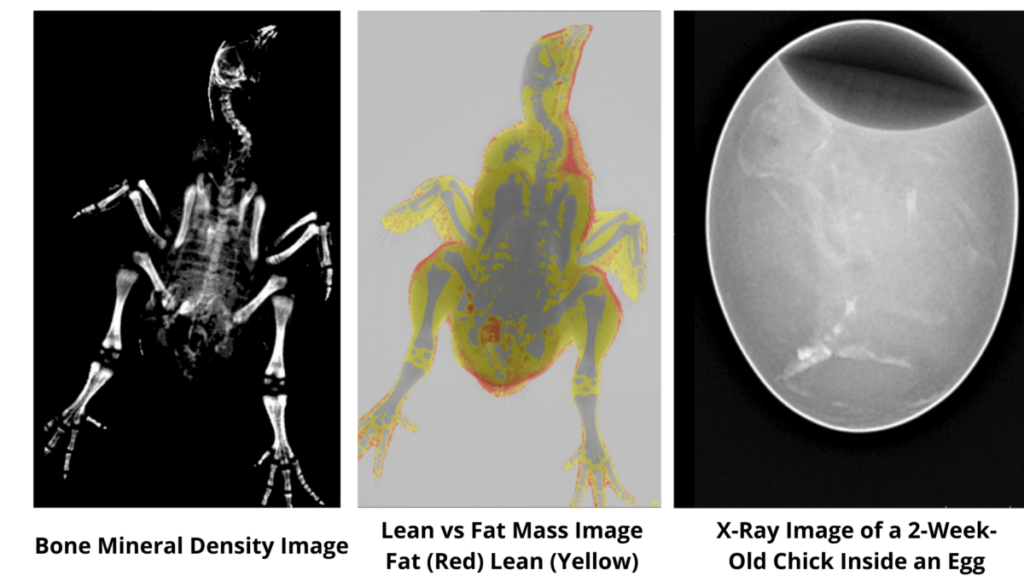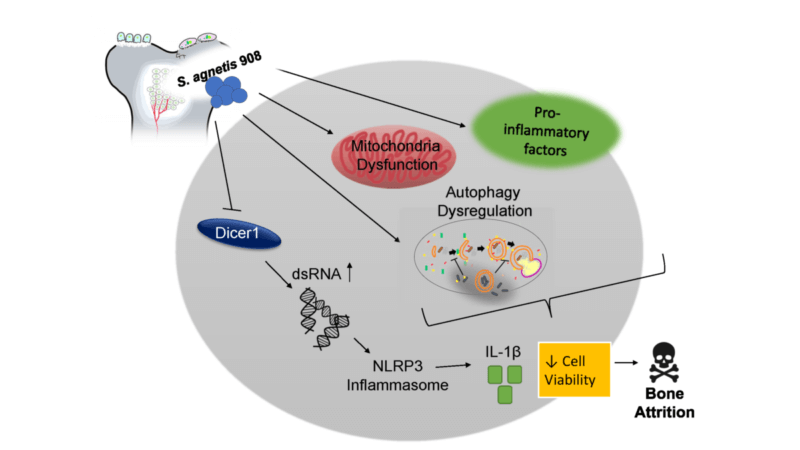(November 30, 2022) Webinar: Molecular Mechanisms Behind Lameness in Meat Chickens – Alterations to Bone Homeostasis and Bacterial Immune Responses

Overview:
Today, poultry meat is at the top of consumers’ lists as an affordable, nutritious, and healthy protein source. The modern meat-type chicken’s highly efficient growth rate and outstanding meat yield account for much of the poultry industry’s success, but many of today’s consumers care more than the price tag. As concerns for animal welfare, health, and sustainability grow along with the global population’s craving for animal protein, effectively addressing lameness incidence in meat birds is of key interest. A major obstacle in tackling lameness is the lack of understanding of the mechanistic underpinnings involved in a common cause of lameness, femur head necrosis (FHN), also called bacterial chondronecrosis with osteomyelitis (BCO).
The work of Dr. Alison Ramer’s lab has been to identify mechanisms by which bacteria induce the symptoms of FHN/BCO, bone attrition, inflammation, and infection through both in vivo and in vitro studies. This work has resulted in several key molecular pathways implicated in FHN/BCO, including DICER dysregulation and dsRNA accumulation, mitochondrial dysfunction, and autophagy dysregulation. In addition to identifying causative pathways, the lab has also sought to identify potential non-invasive biomarkers for the presence of FHN/BCO, which led to the identification of a unique cytokine/chemokine signature both in circulation and at the local bone level of affected birds. Their quest to better define and diagnose this consequential skeletal disease also means seeking new means of measuring and visualizing bone health in meat-type birds to feed the future healthily and sustainably.
Key Points:
- Bone health in meat-type birds is essential and consequential for poultry welfare and production
- Bacterial infections of the long bones that lead to lameness in meat-type birds derive from dysregulation of molecular pathways at the cellular level
- Impaired bone health results in a systemic, pro-inflammatory state that is detectable via non-invasive measures
- Future work must address the rise of subclinical bone infections and the need for improved means of detecting, describing, and selecting for bone health in meat-type birds

About the Speaker (s)

Dr. Alison Ramser
Post-Doctoral Researcher, Center for Excellence in Poultry Science, University of Arkansas
Alison Ramser is a current post-doctoral researcher under Dr. Sami Dridi in the Center for Excellence in Poultry Science at the University of Arkansas. She recently received her PhD in Cell and Molecular Biology from the University of Arkansas where she studied molecular mechanisms behind bacterially induced femur head necrosis in meat-type birds. She received a bachelor’s degree from Penn State in Animal Science with a minor in Poultry Science in 2019. Alison’s research has gone beyond lameness to include other physiological responses and states in broilers, such as changes in gut nutrient transporters and hypothalamic inflammation in response to chronic heat stress, hormonal regulation of key metabolic and immune-related factors in avian tissue, and the effect of heat stress on the gut metabolome. This research is integral to Alison’s goal of improving broiler welfare, production, and efficiency through better understanding and more accurate means of phenotyping current physiological challenges and diseases.